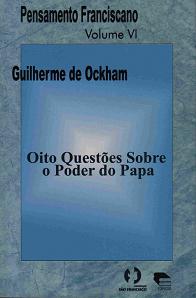

He argues that the law is how justice is implmented in secular society, but it is not simply a technique to be manipulated at will: it is also an expression of the core beliefs of the West. Francis in Assisi.A provocative investigation of how law shapes everyday life In this groundbreaking work, French legal scholar Alain Supiot examines the relationship of society to legal discourse. Highlighting then two of the central theses of this “immanent aesthetic”, we shall try to show the possible reflections that these theses may have had in the iconography of some frescoes in the Basilica of St. In this paper we will analyze only the first two grades of this Itinerarium, which constitute both of them what we might call the “immanent aesthetic” of St. Bonaventure (1221-1274) discusses the six degrees (with a seventh of ecstatic enjoyment) by which man can and should ascend from the created world to contemplate God. In his Itinerarium mentis in Deum (1259), St. Francis in Assisi, Created world, God, Iconography, Medieval Philosophy, St. Monastic and Scholastic Philosophy in the Middle Ages Keywords:Īesthetics, Basilica of St. La Estética inmanente de San Buenaventura y sus posibles reflejos en la iconografía de la Basílica de San Francisco en Asís Published in José María SALVADOR GONZÁLEZ Original title:Īscensio in Deum per vestigia et in vestigiis.

After reviewing twelve specific points on those two works, it is concluded that, while not denying the enormous importance of Fonseca’s work, Isabel de Villena, institutes a literary manner that will become fundamental in the development of religious narrative in the Iberian peninsula. Issues such as alleged femininity, use of popular language with sentimental overtones, dependence on fictions from different periods, debt to specific sources, and structuring works with a specific reader in mind are examined. This article analyzes the vitae Christi written by Isabel de Villena (fifteenth century) and Cristobal de Fonseca (sixteenth century) from the the point of view of the European tradition and the reform brought about by the Franciscan order, which was in favor of reaching the people in the vernacular.

Otra forma de literatura humanística de los siglos XV y XVI: las vitae Christi de Isabel de Villena y Cristóbal de Fonseca Published inįranciscan literature, Isabel de Villena, Vita Christi. From iconographic and architectural analyzes, I realized the association between church bells, the architecture of the sanctuary towers where they are housed and the melody of the Angelus (The Virgin's Touch). For this article, I present to you the Cantiga 276 of the Cantigas de Santa Maria. Music and image share with the poetry a sensitivity capable of expressing in different ways certain reports of miracles or praise.

In Cantigas, reality is overcome by imagination without limits and the relation of poetry with two other artistic forms (Music and image) makes it literary support in which the themes of the songs to the Virgin were formed. Harmonious as a song, the Galician-Portuguese poetry, systematized by the zéjel metric, was the basis of the poetry of Cantigas de Santa Maria, a compilation that contains reports of miracles and praises to the Virgin performed in the second half of the 13th century at the request of the castilian king Alfonso X (1221-1284), creator, sponsor and supervisor of the work. Music in Middle Ages and Early Modernity Keywords:Īlfonso X, Architecture, Art, Cantigas de Santa María, Middle Ages, Music, Poetry. Angelus ou O toque da Virgem: a Música nas Cantigas de Santa Maria (séc.


 0 kommentar(er)
0 kommentar(er)
